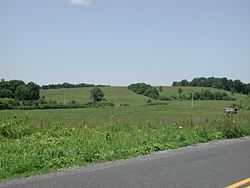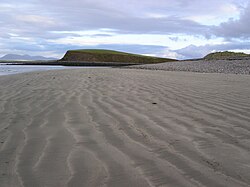Drumlin
A drumlin (derived from the Gaelic word druim, rounded hill or mound, of which there is evidence of its use in 1833) is a form of relief of glacial, a small, smooth-sided mound, streamlined in shape, often formed beneath moving glacial ice. Its shape, with one end sharper than the other, is due to the way the glacier ran through or around it. They are low hills, domical or inverted spoon-shaped, elongated in the direction of ice movement, with the gentlest slope pointing in the direction in which the ice was moving. They are formed by accumulation of glacial sediments such as tills and moraines.
Training
Drumlins and drumlin groups are widely studied landforms of glacial origin that are composed primarily of glacial till. Geologists have proposed several theories about its origin. They form a short distance into glacial ice and record the final direction of movement of the ice before its retreat. Drumlins occur in symmetrical, parabolic, and transversely asymmetrical shapes. Dumlins are commonly found alongside other glacial landforms to which they are related on a regional scale. The large-scale patterns of the drumlins suggest a formation related to tunnel valleys, eskeres, scours, and basement rocks exposed by erosion (scalloping and sichelwannen).
Contenido relacionado
Machu Picchu base
Wadati-Benioff zone
Alcazar of San Juan
Andes mountains
Periglaciate



